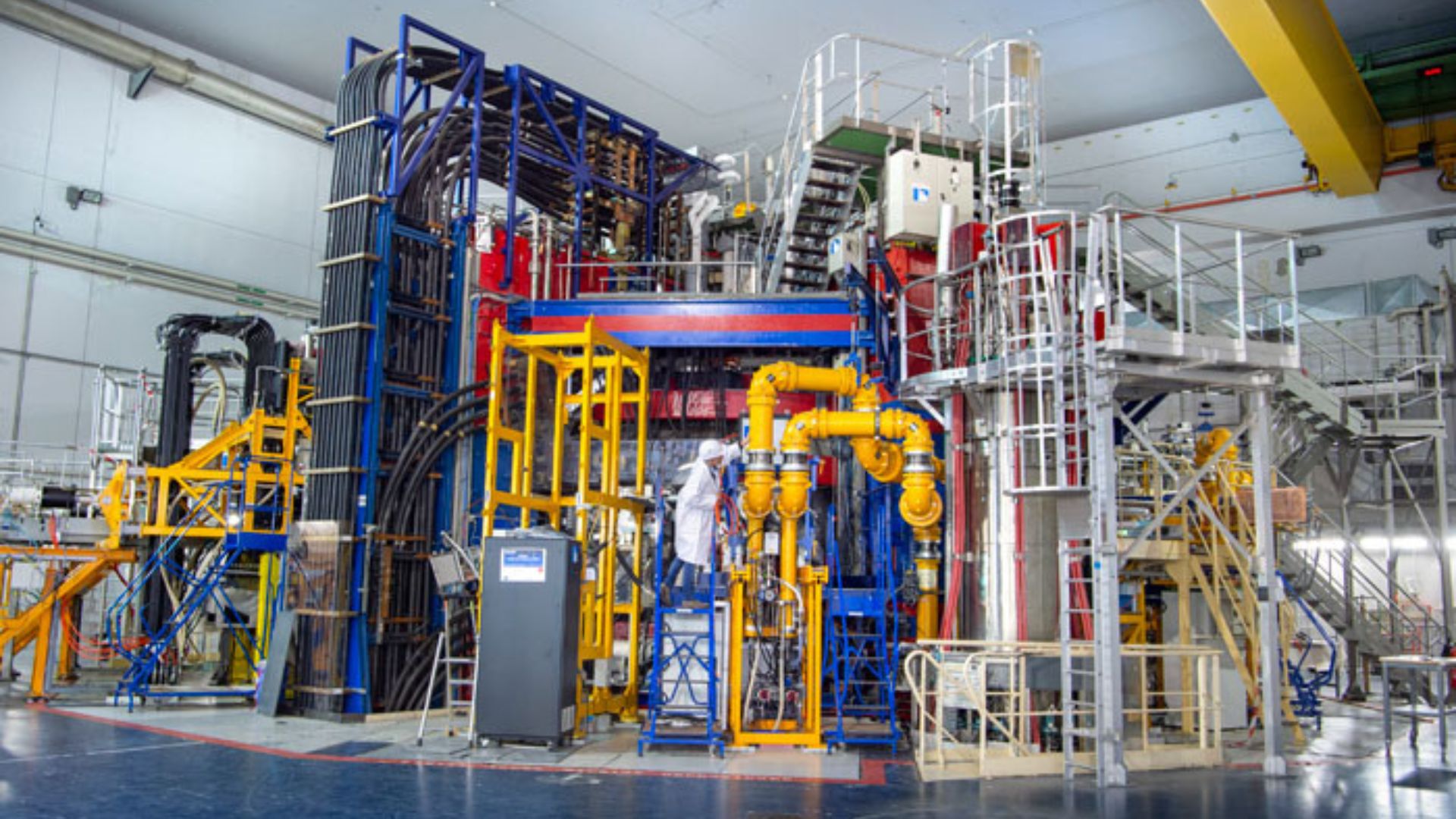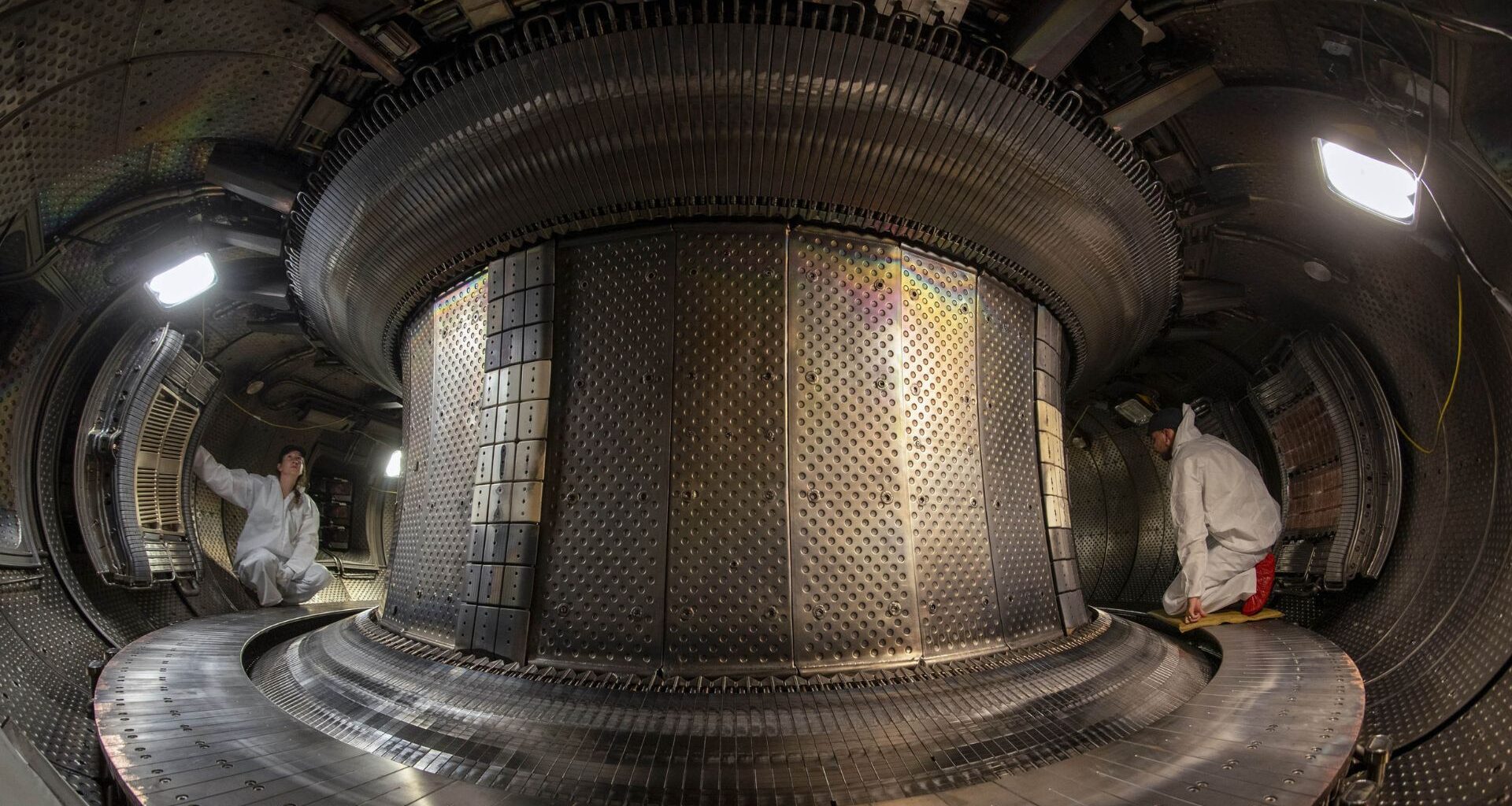France has set a new milestone in fusion energy, sustaining a plasma reaction for over 22 minutes.
The record-breaking achievement occured at the WEST Tokamak reactor, operated by the Commissariat à l’énergie atomique et aux énergies alternatives (CEA).
CEA’s WEST Tokamak achieved a record 1,337-second plasma run—beating China’s 1,066-second benchmark by 25% and shattering the 10-second baseline.
 The plasma record reached a temperature of 50 million degrees.
The plasma record reached a temperature of 50 million degrees.
“This leap forward demonstrates how our knowledge of plasmas and technological control of them over longer periods is becoming more mature, and offers hope that fusion plasmas can be stabilized for greater amounts of time in machines such as ITER (International Thermonuclear Experimental Reactor),” said CEA in a statement.
Record-breaking plasma
For devices like Iter, which must sustain fusion plasmas for several minutes, reaching periods like these is an important milestone.
According to CEA, the ultimate objective is to manage the inherently unstable plasma while ensuring that any component that comes into contact with it can tolerate its radiation without breaking down or contaminating it.
This explains the current record and is what CEA researchers hope to accomplish. To get closer to the conditions anticipated in fusion plasmas, the WEST team will intensify its efforts over the next few months to not only accomplish extremely long plasma durations—up to several hours combined—but also to heat the plasma to even greater temperatures.
 WEST, the tokamak run by the CEA.
WEST, the tokamak run by the CEA.
WEST, a CEA facility, leverages decades of expertise in tokamak-based plasma research. It attracts global scientists who utilize its superconducting coils and actively cooled components for extended plasma experiments.
WEST is part of a broader international fusion effort, alongside projects like Japan’s JT-60SA, China’s EAST, South Korea’s KSTAR, and the now-closed Joint European Torus (JET) in the UK, which holds the fusion energy record. CEA researchers also contribute to ITER, the leading global fusion initiative.
“WEST has achieved a new key technological milestone by maintaining hydrogen plasma for more than twenty minutes through the injection of 2 MW of heating power. Experiments will continue with increased power.
This excellent result allows both WEST and the French community to lead the way for the future use of ITER.”, said Anne-Isabelle Etienvre, Director of Fundamental Research at the CEA, in a statement.
Sustainable energy challenge
Nuclear fusion aims to control inherently unstable plasma, offering a highly efficient energy source with minimal fuel use and no long-lived radioactive waste.
Among various fusion techniques, magnetic confinement fusion is the most advanced. This method traps plasma in a toroidal chamber using strong magnetic fields, heating it until hydrogen nuclei fuse. The JET has demonstrated fusion power generation of 15 MW for several seconds.
France, home to both WEST and ITER, is positioned to host the prototype fusion reactor. Fusion energy, which relies on nuclear reactions, shares synergies with fission technology, particularly in neutron-related applications.
However, large-scale fusion energy production faces significant challenges. Infrastructure demands, unresolved technological hurdles, and economic viability concerns mean fusion is unlikely to contribute substantially to net-zero carbon goals by 2050.
According to experts at CEA, overcoming these barriers will be crucial to realizing fusion’s potential as a sustainable energy source.
